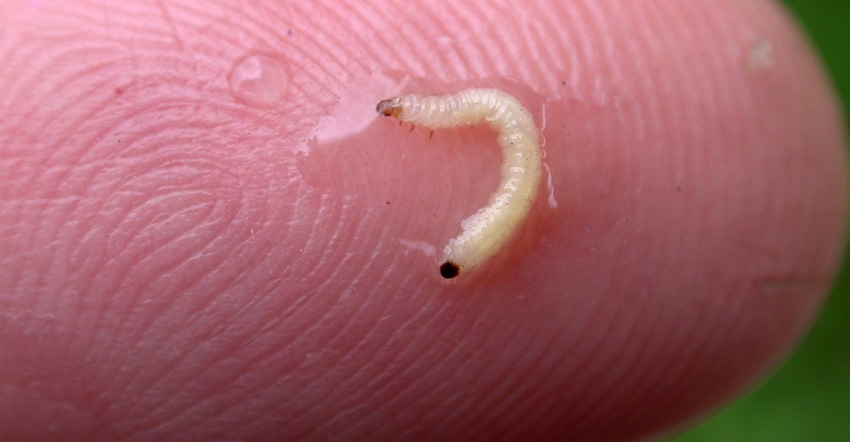
You’re a consulting agronomist. You’re on a farm where the farmer didn’t use belowground Bt protection to save money. You dig some plants because you’re curious. You find rootworm larvae after washing the roots. Is there any advantage to the farmer at that point to know whether rootworms are present or not?
See if your answer matches suggestions from this month's panel of Indiana certified crop advisers. They include Traci Bultemeier, an accounts manager for DuPont Pioneer, Fort Wayne; Gene Flaningam, Flaningam Ag Consulting LLC, Vincennes; and Bryan Overstreet, Purdue University Extension ag educator in Jasper County.
Bultemeier: Knowledge is power, so yes, there’s an advantage to knowing if rootworm larvae are present. It can assist with decisions for future years, and can help you understand the need to scout for silk feeding by adult rootworm beetles later this year.
What you really need to know, though, is the actual amount of feeding occurring now. Monitor it. Larvae could be present but in very low numbers, or larvae could be found in the starvation process. Many larvae can drown during late May or early June rains as hatch occurs.
Scout multiple areas in the field, not just one location. Dig up soil and roots of 10 random plants, and make assessments by hand-washing roots to give you a more accurate idea of what is happening.
Flaningam: There are no effective rescue treatments for rootworms feeding on the current corn crop. Depending on where you farm in the Midwest, you could have rootworm activity in first-year corn. There are variants of the western corn rootworm beetle that lay eggs in soybean fields. This phenomenon first showed up over two decades ago. If that happens, those eggs can hatch and larvae can eat on roots in first-year corn the following year. It’s important to evaluate your cornfields during the growing season. Management decisions on issues such as corn rootworm management will impact your farm profitability.
Overstreet: I think it's worth scouting the field. The threshold for treatment is two or more larvae per plant. You can find them by digging up plants and hand-sorting through the soil and root mass. Do it before the time when you would typically cultivate, back when people cultivated corn. If you scout at that time and find you are over the threshold for treatment, there are only a few options to control rootworm larvae in the crop. You can apply Lorsban, Bolton or Cobalt Advanced during the cultivation layby treatment. This will take adding some special equipment to your cultivator to get the insecticide in the proper place and at the proper rate.
Summing up: Note that one CCA discounts in-season treatment as an option, while another CCA explains how it could be done. Most sources agree that trying to treat rootworm larvae in-season and obtaining effective control is extremely difficult. However, the CCAs agree that scouting for larvae can reveal information that can help you scout for adult rootworm beetles later in the season, and can help you make better decisions for next year.
About the Author(s)
You May Also Like




